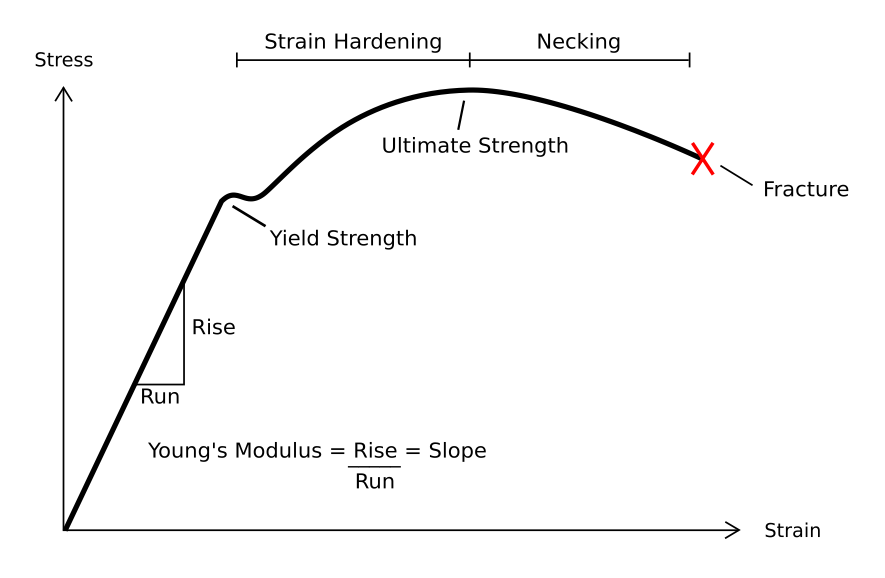|
Liquidmetal
Liquidmetal and Vitreloy are commercial names of a series of amorphous metal alloys developed by a California Institute of Technology (Caltech) research team and marketed by Liquidmetal Technologies. Liquidmetal alloys combine a number of desirable material features, including high tensile strength, excellent corrosion resistance, very high coefficient of restitution and excellent anti-wearing characteristics, while also being able to be heat-formed in processes similar to thermoplastics. Despite the name, they are not liquid at room temperature. Liquidmetal was introduced for commercial applications in 2003. It is used for, among other things, golf clubs, watches and covers of cell phones. The alloy was the end result of a research program into amorphous metals carried out at Caltech. It was the first of a series of experimental alloys that could achieve an amorphous structure at relatively slow cooling rates. Amorphous metals had been made before, but only in small batches be ... [...More Info...] [...Related Items...] OR: [Wikipedia] [Google] [Baidu] |
Amorphous Metal
An amorphous metal (also known as metallic glass, glassy metal, or shiny metal) is a solid metallic material, usually an alloy, with disordered atomic-scale structure. Most metals are crystalline in their solid state, which means they have a highly ordered arrangement of atoms. Amorphous metals are non-crystalline, and have a glass-like structure. But unlike common glasses, such as window glass, which are typically electrical insulators, amorphous metals have good electrical conductivity and can show metallic luster. There are several ways in which amorphous metals can be produced, including extremely rapid cooling, physical vapor deposition, solid-state reaction, ion irradiation, and mechanical alloying. Previously, small batches of amorphous metals had been produced through a variety of quick-cooling methods, such as amorphous metal ribbons which had been produced by sputtering molten metal onto a spinning metal disk ( melt spinning). The rapid cooling (in the order of ... [...More Info...] [...Related Items...] OR: [Wikipedia] [Google] [Baidu] |
Glass
Glass is a non-Crystallinity, crystalline, often transparency and translucency, transparent, amorphous solid that has widespread practical, technological, and decorative use in, for example, window panes, tableware, and optics. Glass is most often formed by rapid cooling (quenching) of the Melting, molten form; some glasses such as volcanic glass are naturally occurring. The most familiar, and historically the oldest, types of manufactured glass are "silicate glasses" based on the chemical compound silicon dioxide, silica (silicon dioxide, or quartz), the primary constituent of sand. Soda–lime glass, containing around 70% silica, accounts for around 90% of manufactured glass. The term ''glass'', in popular usage, is often used to refer only to this type of material, although silica-free glasses often have desirable properties for applications in modern communications technology. Some objects, such as drinking glasses and glasses, eyeglasses, are so commonly made of silicate- ... [...More Info...] [...Related Items...] OR: [Wikipedia] [Google] [Baidu] |
Tensile Strength
Ultimate tensile strength (UTS), often shortened to tensile strength (TS), ultimate strength, or F_\text within equations, is the maximum stress that a material can withstand while being stretched or pulled before breaking. In brittle materials the ultimate tensile strength is close to the yield point, whereas in ductile materials the ultimate tensile strength can be higher. The ultimate tensile strength is usually found by performing a tensile test and recording the engineering stress versus strain. The highest point of the stress–strain curve is the ultimate tensile strength and has units of stress. The equivalent point for the case of compression, instead of tension, is called the compressive strength. Tensile strengths are rarely of any consequence in the design of ductile members, but they are important with brittle members. They are tabulated for common materials such as alloys, composite materials, ceramics, plastics, and wood. Definition The ultimate tensile ... [...More Info...] [...Related Items...] OR: [Wikipedia] [Google] [Baidu] |
Plastic Deformation
In engineering, deformation refers to the change in size or shape of an object. ''Displacements'' are the ''absolute'' change in position of a point on the object. Deflection is the relative change in external displacements on an object. Strain is the ''relative'' internal change in shape of an infinitesimally small cube of material and can be expressed as a non-dimensional change in length or angle of distortion of the cube. Strains are related to the forces acting on the cube, which are known as stress, by a stress-strain curve. The relationship between stress and strain is generally linear and reversible up until the yield point and the deformation is elastic. The linear relationship for a material is known as Young's modulus. Above the yield point, some degree of permanent distortion remains after unloading and is termed plastic deformation. The determination of the stress and strain throughout a solid object is given by the field of strength of materials and for a st ... [...More Info...] [...Related Items...] OR: [Wikipedia] [Google] [Baidu] |
USB Flash Drive
A USB flash drive (also called a thumb drive) is a data storage device that includes flash memory with an integrated USB interface. It is typically removable, rewritable and much smaller than an optical disc. Most weigh less than . Since first appearing on the market in late 2000, as with virtually all other computer memory devices, storage capacities have risen while prices have dropped. , flash drives with anywhere from 8 to 256 gigabytes (GB) were frequently sold, while 512 GB and 1 terabyte (TB) units were less frequent. As of 2018, 2 TB flash drives were the largest available in terms of storage capacity. Some allow up to 100,000 write/erase cycles, depending on the exact type of memory chip used, and are thought to physically last between 10 and 100 years under normal circumstances ( shelf storage timeUSB flash drives allow reading, writing, and erasing of data, with some allowing 1 million write/erase cycles in each cell of memory: if there were 100 use ... [...More Info...] [...Related Items...] OR: [Wikipedia] [Google] [Baidu] |
SanDisk
SanDisk is a brand for flash memory products, including memory cards and readers, USB flash drives, solid-state drives, and digital audio players, manufactured and marketed by Western Digital. The original company, SanDisk Corporation was acquired by Western Digital in 2016. Western Digital was the fourth-largest manufacturer of flash memory having declined from third-largest in 2014. History SanDisk was founded in 1988 by Eli Harari, Sanjay Mehrotra, and Jack Yuan, incorporated at the time as SunDisk. SanDisk co-founder Eli Harari developed the Floating Gate EEPROM which proved the practicality, reliability and endurance of semiconductor-based data storage. In 1991 SanDisk produced the first flash-based solid-state drive (SSD) in a 2.5-inch hard disk drive form factor for IBM with a 20 MB capacity priced at about $1,000. In 1992, SanDisk (then SunDisk) introduced FlashDisk, a series of memory cards made for the PCMCIA or PC card form factor, so they could be inserted i ... [...More Info...] [...Related Items...] OR: [Wikipedia] [Google] [Baidu] |
Plastic
Plastics are a wide range of synthetic or semi-synthetic materials that use polymers as a main ingredient. Their plasticity makes it possible for plastics to be moulded, extruded or pressed into solid objects of various shapes. This adaptability, plus a wide range of other properties, such as being lightweight, durable, flexible, and inexpensive to produce, has led to its widespread use. Plastics typically are made through human industrial systems. Most modern plastics are derived from fossil fuel-based chemicals like natural gas or petroleum; however, recent industrial methods use variants made from renewable materials, such as corn or cotton derivatives. 9.2 billion tonnes of plastic are estimated to have been made between 1950 and 2017. More than half this plastic has been produced since 2004. In 2020, 400 million tonnes of plastic were produced. If global trends on plastic demand continue, it is estimated that by 2050 annual global plastic production will reach over 1,1 ... [...More Info...] [...Related Items...] OR: [Wikipedia] [Google] [Baidu] |
Wear
Wear is the damaging, gradual removal or deformation of material at solid surfaces. Causes of wear can be mechanical (e.g., erosion) or chemical (e.g., corrosion). The study of wear and related processes is referred to as tribology. Wear in machine elements, together with other processes such as fatigue and creep, causes functional surfaces to degrade, eventually leading to material failure or loss of functionality. Thus, wear has large economic relevance as first outlined in the Jost Report. Abrasive wear alone has been estimated to cost 1-4% of the gross national product of industrialized nations. Wear of metals occurs by plastic displacement of surface and near-surface material and by detachment of particles that form wear debris. The particle size may vary from millimeters to nanometers. This process may occur by contact with other metals, nonmetallic solids, flowing liquids, solid particles or liquid droplets entrained in flowing gasses. The wear rate is affected by f ... [...More Info...] [...Related Items...] OR: [Wikipedia] [Google] [Baidu] |
Tennis Racquet
A racket, or racquet, is a sports implement used for striking a ball or shuttlecock in games such as squash, tennis, racquetball, badminton and padel. In the strictest sense a racket consists of a handled frame with an open hoop across which a network of strings is stretched tightly. Some rackets may have a solid or perforated hitting surface instead of a network of strings. Such rackets may be called a paddle or bat. Collectively, these games are known as racket sports. Racket design, materials and manufacturing has changed considerably over the centuries. The frame of rackets for all sports was traditionally made of solid wood (later laminated wood) and the strings of animal intestine known as catgut. The traditional racket size was limited by the strength and weight of the wooden frame which had to be strong enough to hold the strings and stiff enough to hit the ball or shuttle. Manufacturers started adding non-wood laminates to wood rackets to improve stiffness. Non-wood r ... [...More Info...] [...Related Items...] OR: [Wikipedia] [Google] [Baidu] |
Softball
Softball is a game similar to baseball played with a larger ball on a smaller field. Softball is played competitively at club levels, the college level, and the professional level. The game was first created in 1887 in Chicago by George Hancock. There are two rule sets for softball generally: ''slow pitch softball'' and '' fastpitch''. Slow pitch softball is commonly played recreationally, while women's fastpitch softball is a Summer Olympic sport and is played professionally. Depending on the variety being played and the age and gender of the players, the particulars of field and equipment vary. While distances between bases of 60 feet are standard across varieties, the pitcher's plate ranges from 35 to 43 feet away from home plate, and the home run fence can be 220 to 300 feet away from home plate. The ball itself is typically 11 or 12 inches (28 or 30 cm) in circumference, also depending on specifics of the competition. Softball rules vary somewhat from those of baseb ... [...More Info...] [...Related Items...] OR: [Wikipedia] [Google] [Baidu] |
Baseball Bat
A baseball bat is a smooth wooden or metal club used in the sport of baseball to hit the ball after it is thrown by the pitcher. By regulation it may be no more than in diameter at the thickest part and no more than in length. Although historically bats approaching were swung, today bats of are common, topping out at to . Terminology A baseball bat is divided into several regions. The "barrel" is the thick part of the bat, where it is meant to hit the ball. The part of the barrel best for hitting the ball, according to construction and swinging style, is often called the " sweet spot." The end of the barrel is called the "top," "end," or "cap" of the bat. Opposite the cap, the barrel narrows until it meets the "handle," which is comparatively thin, so that batters can comfortably grip the bat in their hands. Sometimes, especially on metal bats, the handle is wrapped with a rubber or tape "grip". Finally, below the handle is the "knob" of the bat, a wider piece that keeps ... [...More Info...] [...Related Items...] OR: [Wikipedia] [Google] [Baidu] |
Golf Ball
A golf ball is a special ball designed to be used in the game of golf. Under the rules of golf, a golf ball has a mass no more than , has a diameter not less than , and performs within specified velocity, distance, and symmetry limits. Like golf clubs, golf balls are subject to testing and approval by The R&A (formerly part of the Royal and Ancient Golf Club of St Andrews) and the United States Golf Association, and those that do not conform with regulations may not be used in competitions ''(Rule 5–1)''. History Early Balls It is commonly believed that hard wooden, round balls, made from hardwoods such as beech and box, were the first balls used for golf between the 14th through the 17th centuries. Though wooden balls were no doubt used for other similar contemporary stick and ball games, there is no definite evidence that they were actually used in golf in Scotland. It is equally, if not more likely, that leather balls filled with cows' hair were used, imported from t ... [...More Info...] [...Related Items...] OR: [Wikipedia] [Google] [Baidu] |









